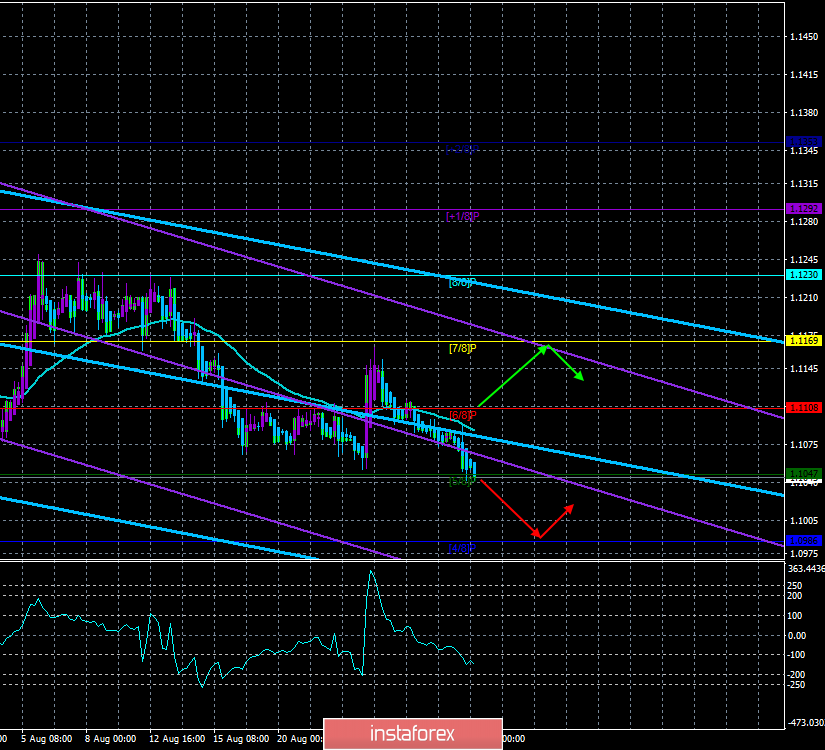
The fall of the European currency continues. The preliminary value of EU inflation for August has already been published today. It turned out that the basic consumer price index remained unchanged - +0.9% y/y, although traders expected to see +1.0%, and the main inflation was 1.0% y/y, as predicted by expert agencies. We expected to see a slowdown in core inflation, as inflation in Germany declined significantly compared to the previous period. This did not happen, but we would like to note that the value for August is not final. And even if the final value is 1.0% y/y, it is still an extremely low figure. The ECB, led by Mario Draghi, will not be able not to react to this.
The whole situation with rates and monetary policy of the European Central Bank resembles a snow globe that is rolling down the mountain. It is already rolling and will slide to the very bottom – at this point, the ECB will lower the key rate and turn on the printing press to buy various bonds from the market and begin to pump cash into the EU economy. The only question is how fast the snowball will reach the bottom. If quickly, then there will not be any obstacles (inflation in August unexpectedly accelerated, Donald Trump won't suddenly declare that he loves the EU and not going to start a trade war, and GDP will jump up), then in September we are waiting for monetary policy easing and, as a consequence, the new fall of the euro. If the obstacles arise in the form of encouraging macroeconomic statistics, it is possible that the ECB will reduce the rate in October, but given the speed that the snowball has already gained, it is unlikely that the regulator will postpone the decision to ease monetary policy to a later date. Moreover, on October 31, Mario Draghi will resign and is unlikely to want to leave behind the sad state of the EU economy. He is unlikely to want Christine Lagarde to remember him with "kindly quiet word."
We don't even mention, in terms of the prospects for the European currency, the Fed and its course to reduce the key rate, provoked by Donald Trump and his trade wars, which precisely force the Fed to go on easing monetary policy. This is because a possible systematic further reduction of the Fed key rate does not have any effect on the euro/dollar pair. The US dollar has risen and continues to rise despite the fact that one easing of monetary policy has already taken place.
Before updating the 2-year low, 10 points remain.





















